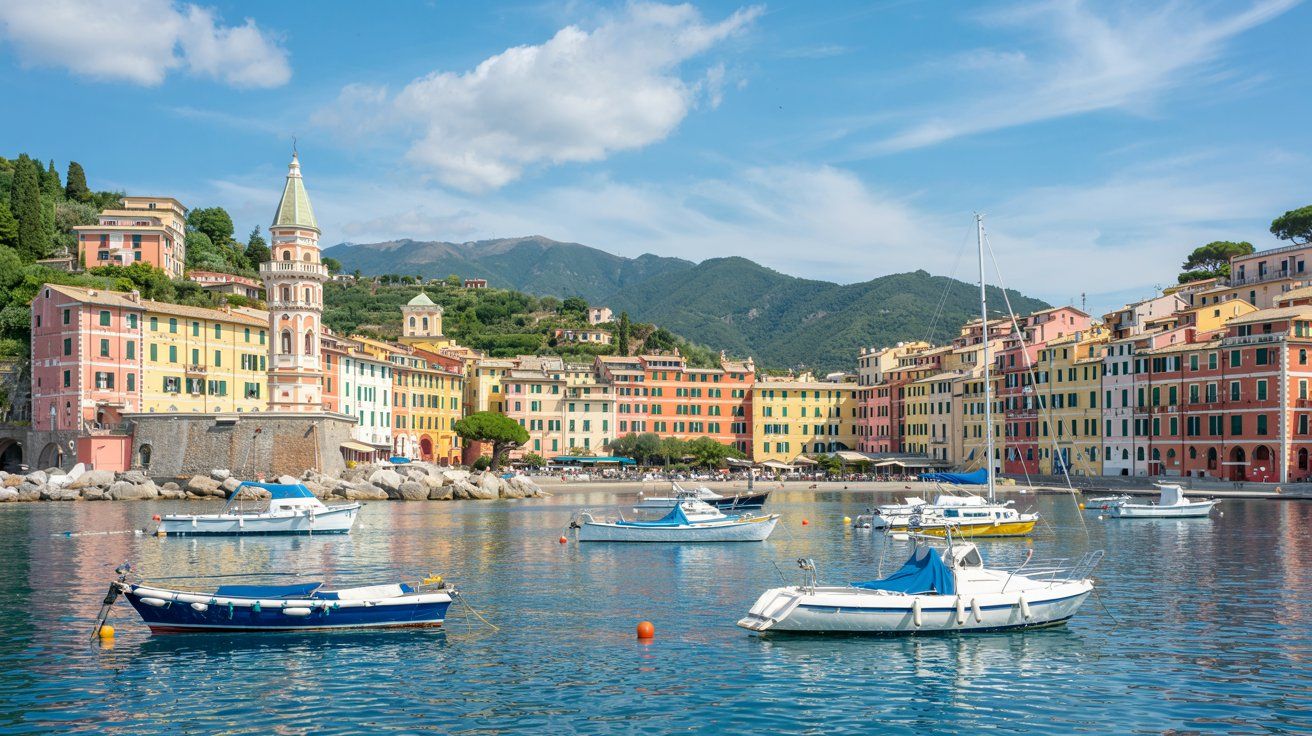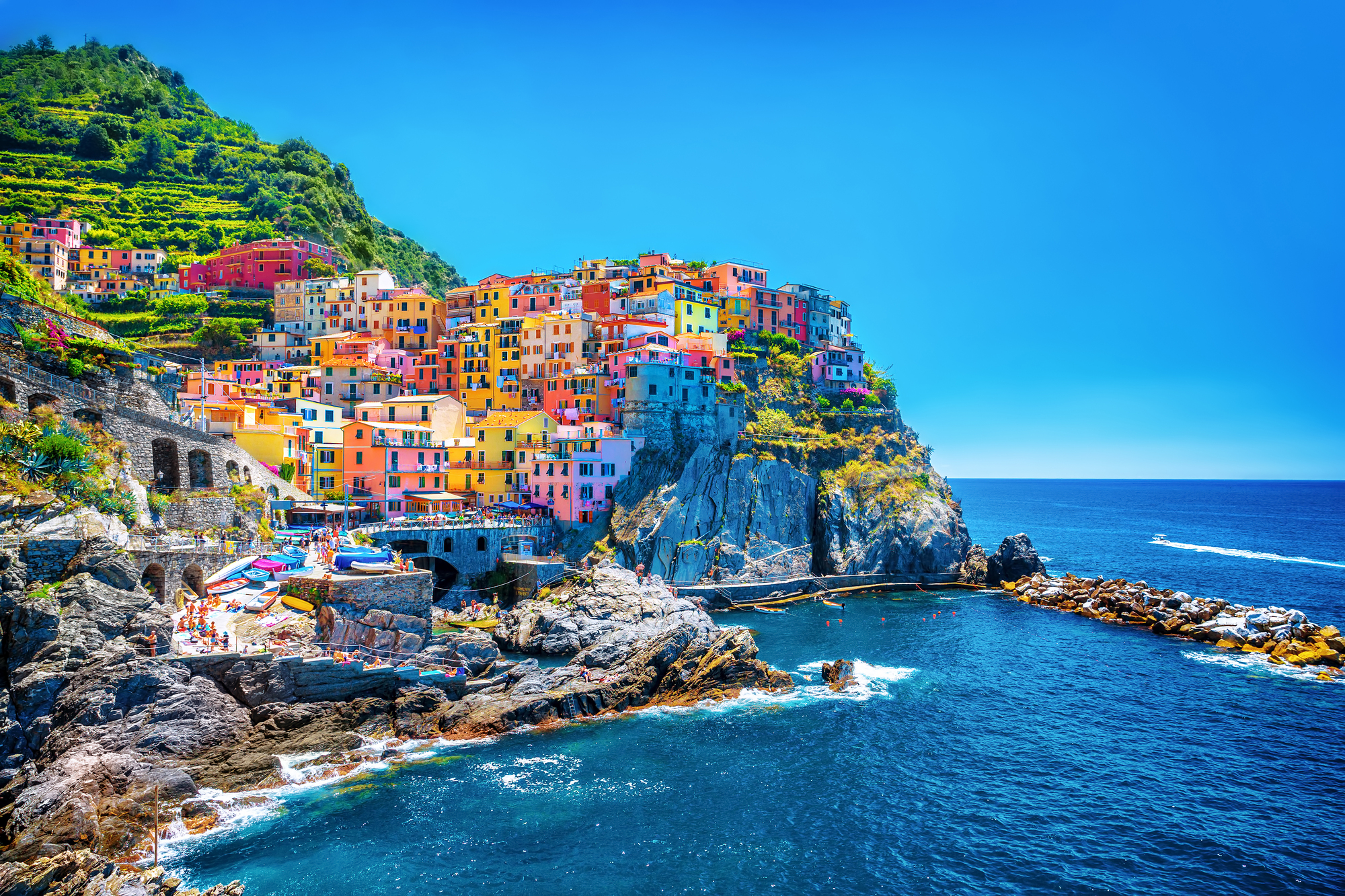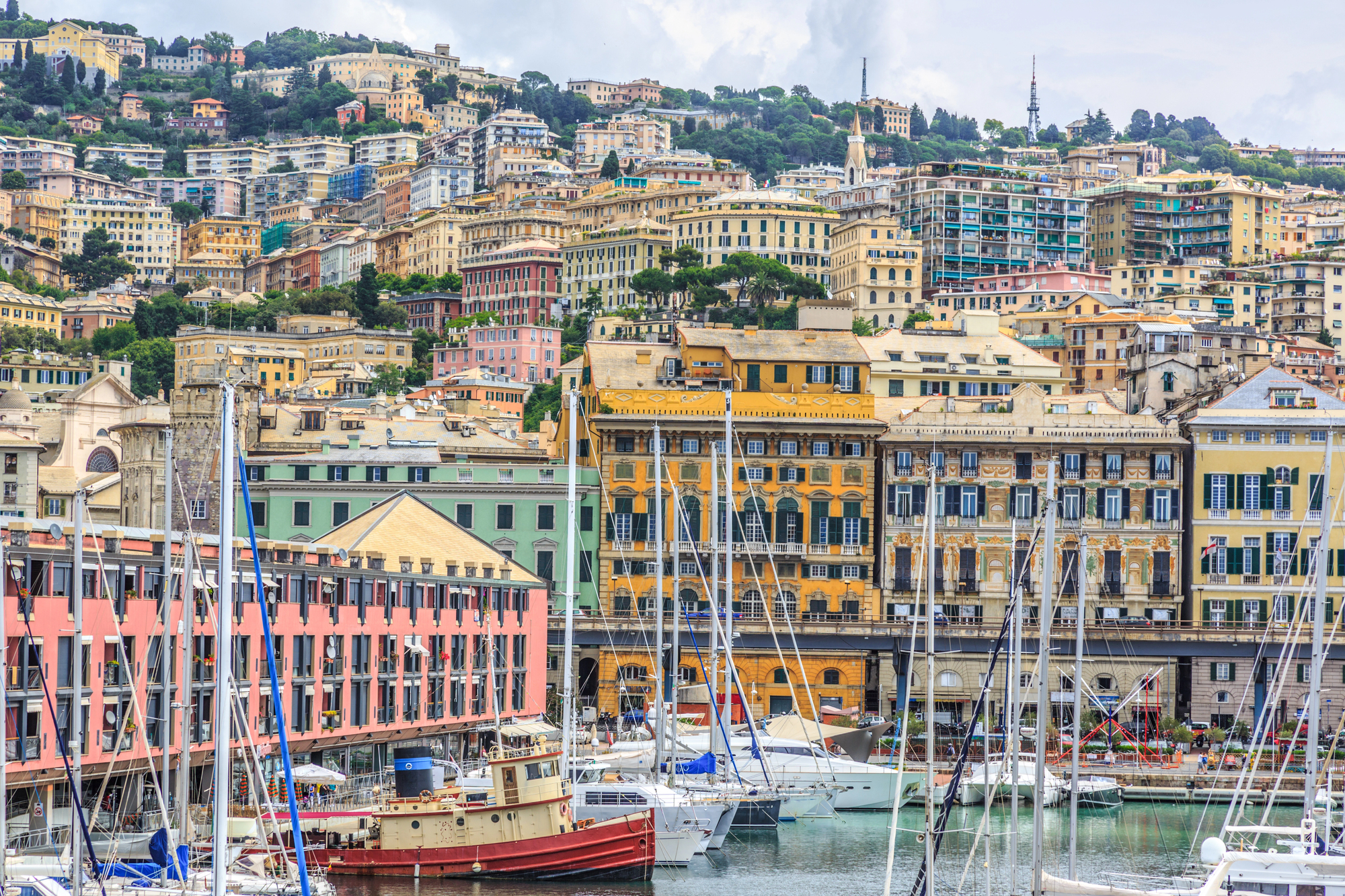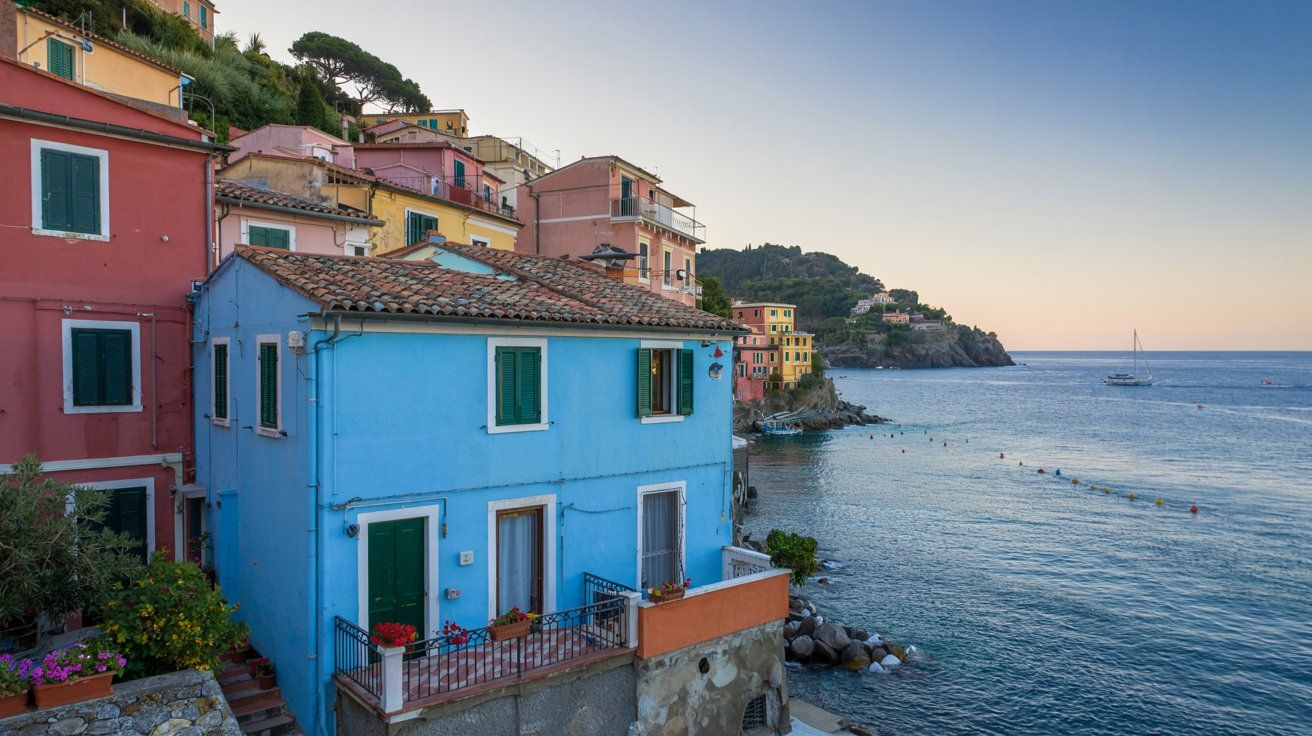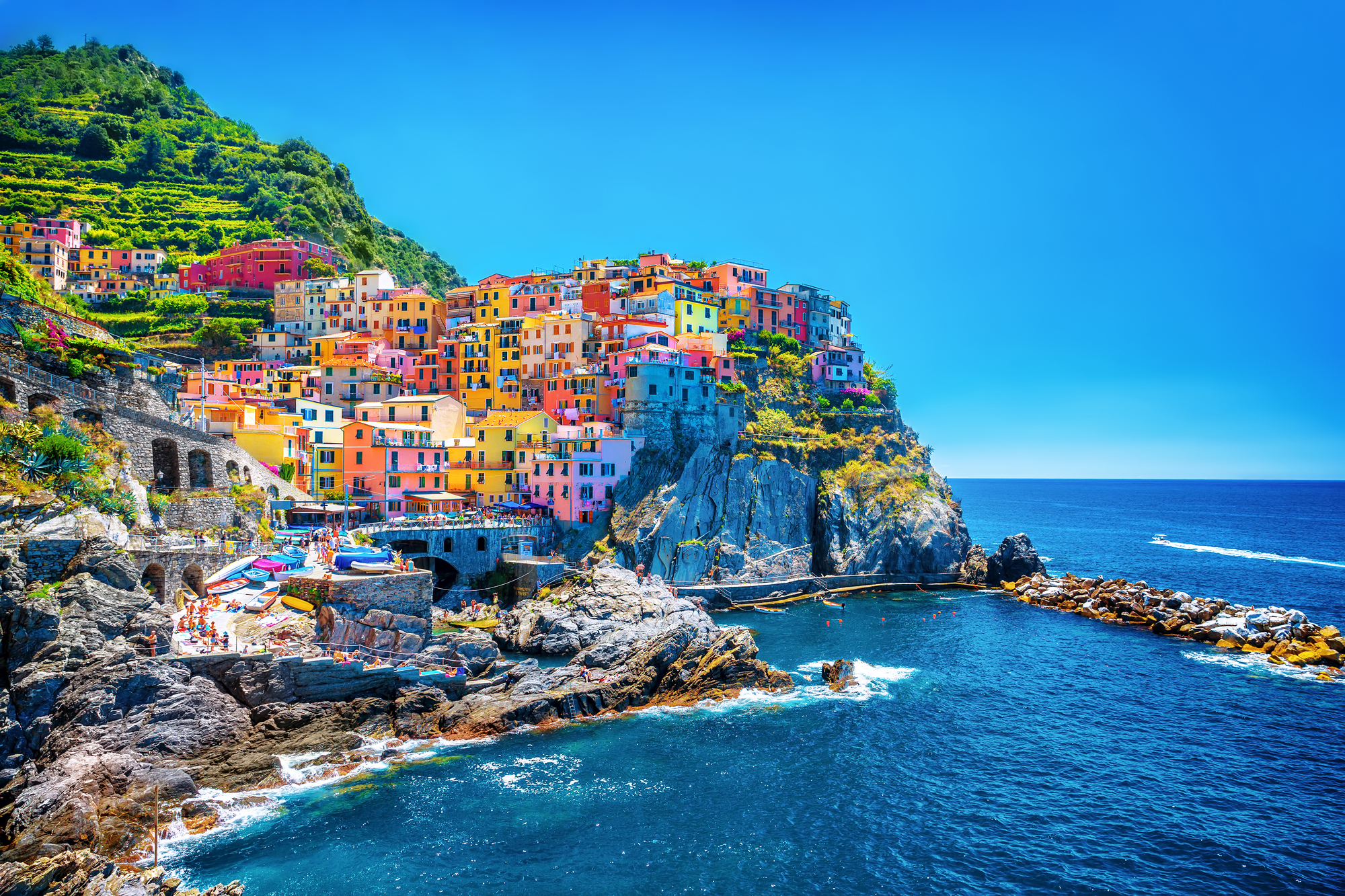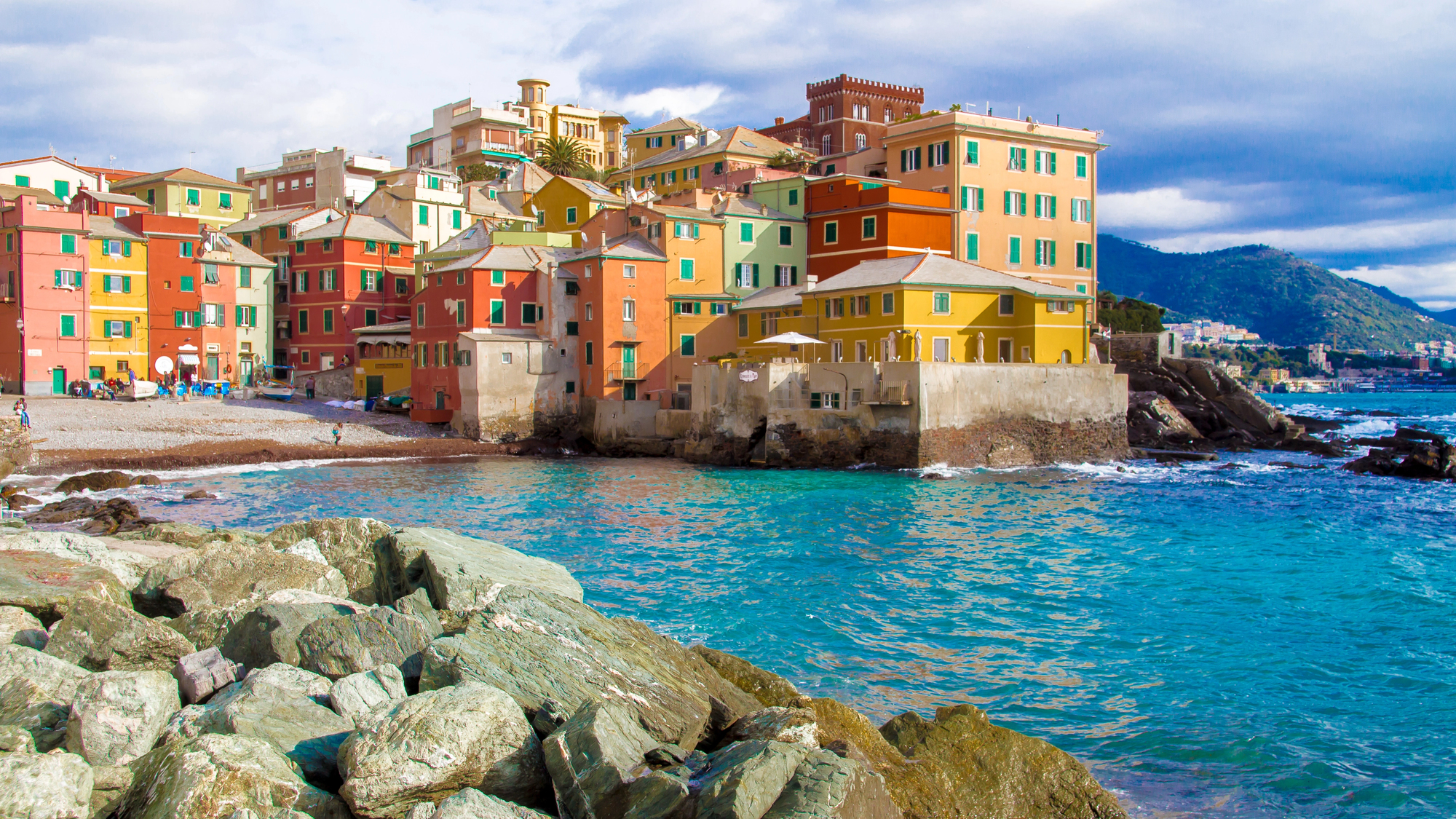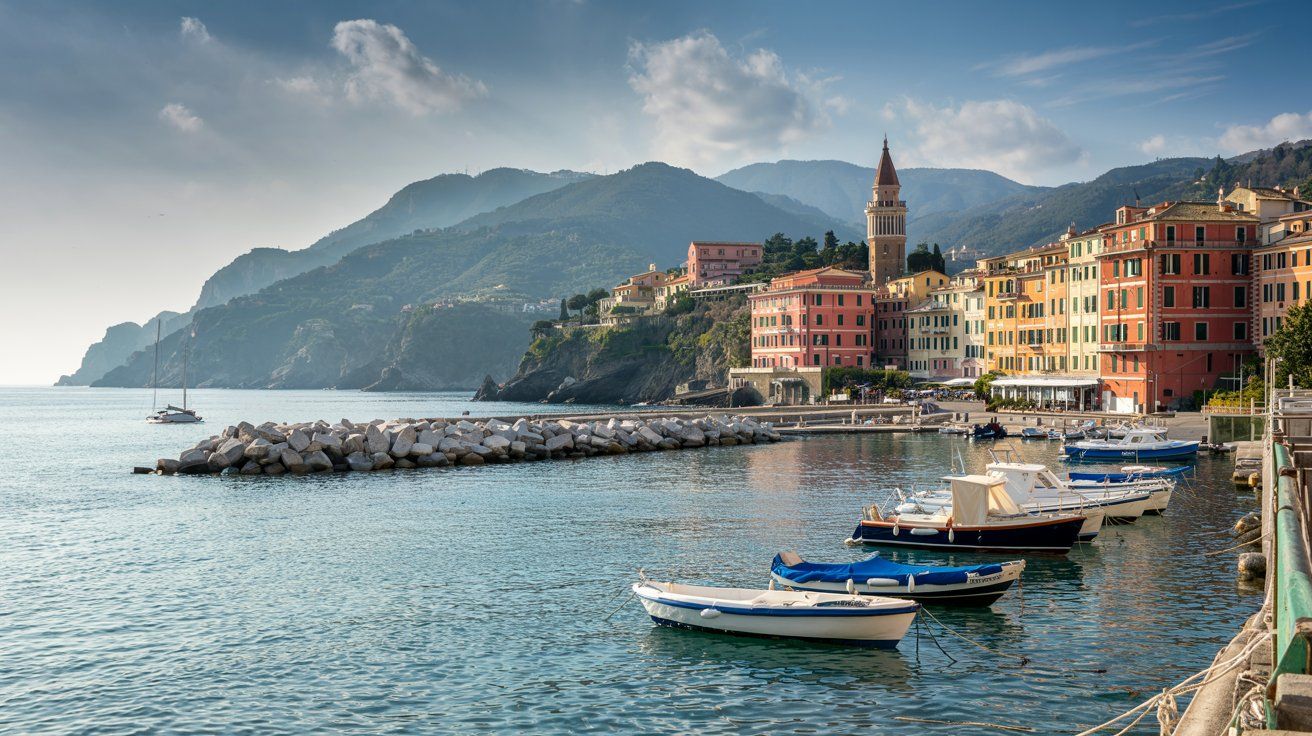The last week of July brings a rush of summer energy to the Italian Riviera. Coastal towns come alive as everyone soaks up long daylight hours and warm weather. This week really feels like the sweet spot for mixing culture, outdoor adventures, and lazy days by the sea across Liguria’s iconic spots.
You could be scrambling up ancient hiking trails, poking around art galleries tucked into fishing ports, or just sitting down to fresh pesto and focaccia at a restaurant with the waves right outside. The region’s geography is wild—you might swim in Monterosso in the morning, get lost in Genoa’s tangled old streets by afternoon, and end up at a festival in some hilltop village after sunset.
Find available hotels and vacation homes instantly. No fees, best rates guaranteed!
Check Availability Now
1) Hike the scenic trails of Cinque Terre
Cinque Terre National Park has 48 trails winding over 120 kilometers through five splashy coastal villages. You can walk between Monterosso, Vernazza, Corniglia, Manarola, and Riomaggiore on marked paths.
The Blue Trail is the classic route—it links all five towns. If you’re not up for a marathon, just hike a section; trains zip between villages all day.
Trail difficulty is all over the place. Some paths are steep and take 45 minutes of climbing, others are gentle and hug the coast.
Mornings are best if you want to dodge the heat and the crowds. If you want to skip the worst climbs, catch a bus up to Telegrafo and start from there.
Along the way, you’ll get sweeping views of terraced vineyards, the Mediterranean, and those old stone houses. Bring water and wear shoes you don’t mind getting scuffed—the paths get rocky and uneven.
Most trails stay open all year, but some close when the weather’s really bad. Definitely check the day’s conditions before you set off.
2) Explore the colorful villages of Portofino
Portofino is about 30 minutes south of Cinque Terre by car, so it’s easy to add to your plans this week. This famous fishing village draws crowds with its candy-colored houses circling the little harbor.
It’s tiny—you can see most of it in half a day. The main piazza is lined with waterfront restaurants, but, honestly, prices are as steep as the cliffs.
If you want a less hectic vibe, hike the trail to Paraggi Beach. It’s a 20-minute walk with great harbor views and fewer tourists.
The marina is packed with flashy yachts, but just walking around the harbor for photos is free and kind of fun. Those pastel facades really do look like a postcard.
Try to visit early or late in the day. Between 11 AM and 3 PM, tour buses roll in and the narrow streets get packed.
Up above, the terraced gardens offer some of the best views. It’s a short uphill walk from the main square.
Parking is €3-5 an hour in summer, which adds up fast. The ferry from Santa Margherita Ligure is a prettier—and sometimes easier—way to arrive.
3) Take a boat tour to San Fruttuoso Abbey
San Fruttuoso Abbey hides in a cove you can only reach by boat or on foot. The 11th-century abbey stands out against the turquoise sea, and it’s a sight you won’t forget.
Several companies run round-trip boat tours from nearby towns. Most trips last about 4.5 hours and let you swim in the clear water.
You can catch boats from Camogli, Portofino, or Genoa. The 30-minute ride from Camogli gives you rugged coastline views as you approach the cove.
Boat tours of the Portofino Promontory and San Fruttuoso usually last around 1.5 hours with guides in both Italian and English. They’ll fill you in on the area’s history and natural highlights.
The abbey complex includes the old monastery, a Doria tower, and a tiny beach. You can wander the ancient stone buildings and hear about the legend of Bishop Fruttuoso.
Many tours stop for snorkeling near the Christ of the Abyss statue underwater. The water’s so clear, you’ll want to bring a mask if you have one.
Book ahead—this hidden gem on the Italian Riviera gets busy in summer.
4) Visit the historic port city of Genoa
Genoa is about 90 minutes east of the French Riviera by train. It’s Italy’s biggest port and has a totally different vibe from the sleepy resort towns.
You can lose yourself in the narrow medieval streets of one of Europe’s largest old towns. The maze of alleys leads straight to the waterfront, and some of the stone paths are centuries old.
Down at the port, you’ll see modern attractions mixed in with traditional fishing boats. Restaurants serve up fresh pesto—this is where it was invented, after all.
Trains run often from Nice and Monaco in summer. It’s about €25 each way with a connection in Ventimiglia.
Give yourself four to six hours to wander the historic quarter and the waterfront. No need to rush.
It gets crowded in summer, especially midday. Early mornings are cooler and the streets are quieter.
Shops close between 1 and 4 PM for siesta, so time your visit if you want to do any shopping or pick up local products.
5) Swim and sunbathe on Monterosso Beach
Monterosso has the only real sandy beach in Cinque Terre. The long stretch of sand means you can actually spread out your towel without bumping elbows.
You can rent chairs and umbrellas from beach clubs, or just bring your own stuff and use the free sections. The water stays warm (about 24°C) into August, perfect for swimming.
The beach splits into two areas, divided by a rocky outcrop. The newer side has more restaurants and amenities, while the old town beach is quieter.
Crystal clear waters make it tempting to swim all day, but the rocky bottom is tough on bare feet—water shoes help. Get there before 10 AM if you want a good spot; it fills up fast in summer.
Beach clubs charge about €25-30 a day for two chairs and an umbrella. The free areas go quickly, so show up early if you want to save money.
The beach faces west, so you get sun until sunset—way better for long days than the pebbly, shaded spots in the other Cinque Terre towns.
6) Dine on fresh Ligurian seafood by the sea
Liguria’s coast brings in daily hauls of anchovies, sea bass, and prawns. Most restaurants buy straight from the boats that come in every morning.
You’ll find everything from rustic trattorias in back alleys to fancy spots right over the water. Many places set tables on terraces or platforms that hang over the sea.
In Santa Margherita Ligure, Capo Nord has a platform above the water where you can eat Ligurian specialties under the stars. The view is unbeatable, and prices aren’t as crazy as you might expect.
Chefs here keep it simple—grilled branzino, fritto misto, or crudo let the fish shine.
Book ahead if you want a waterfront table for dinner, especially in summer. Most places open at 7:30 PM, and the best sunset tables go first.
7) Stroll the vibrant markets in La Spezia
La Spezia’s markets brim with fresh produce and handmade goods that really show off everyday Italian life. Vendors sell seasonal veggies, local cheeses, and crafts all week.
The covered market is busiest in the morning, especially from 8 to noon. Locals shop here, so it feels more authentic and less touristy.
Street markets pop up on certain weekdays in different neighborhoods. You can browse clothes, household stuff, and regional treats, and maybe try out your Italian with the vendors.
Elegant resorts, charming apartments, and vacation rentals with immediate confirmation. From Portofino to Cinque Terre, discover the most beautiful coastal towns of Liguria!
See Available Properties
These markets are a big part of Italian culture, and prices are much better than in the tourist shops along the coast.
Bring cash—most stalls don’t take cards. Show up early for the best fruit and bread. By early afternoon, most markets start winding down.
8) Discover the local art in Camogli
The Basilica of Santa Maria Assunta showcases 15th-century art inside its 12th-century baroque walls. The frescoes are honestly stunning.
The Maritime Museum holds nautical artifacts that tell the story of Camogli’s fishing past. Paintings and ship models fill the place with local history.
Along Via del Borgo, you’ll find tiny galleries with works by Ligurian artists. Some studios are squeezed between the pastel houses, showing paintings and sculptures inspired by the sea.
Camogli’s trompe-l’oeil facades are a local specialty. These painted details trick the eye, turning simple buildings into something much more elaborate.
You’ll spot street art here and there, too—modern pieces with fishing themes pop up on old walls.
If you go on a weekday morning, galleries are open and artists are often around. It’s a good time to chat about their work and what inspires them in this little fishing town.
9) Enjoy wine tasting in the village of Dolceacqua
Dolceacqua sits up in the Val Nervia hills, about 30 minutes from the coast. This medieval village is famous for wine tastings featuring Rossese di Dolceacqua red.
Locals grow Rossese grapes on steep terraces and make a wine with protected status. You can try two local wines, usually paired with regional snacks, at several places in the village.
Tours often include stops at the 12th-century Castello dei Doria and the stone bridge Monet painted. Wine tastings here blend culture with a bit of wine education.
Most tastings run from 10 AM to 6 PM, Tuesday through Sunday. Book ahead if you’re coming in peak summer. Some spots also offer olive oil tastings and cheese pairings.
You can get to Dolceacqua by train from Nice or by bus from Ventimiglia. The streets are narrow and hilly, so wear comfy shoes for wandering between tastings.
10) Attend a summer festival or outdoor concert
Late July and early August mean outdoor concerts and festivals all along the Italian Riviera. Towns set up stages in their main piazzas for evening shows.
Genoa usually hosts several concerts throughout the week at different venues. The old squares make for pretty unforgettable backdrops, whether it’s a local band or a touring act.
Smaller towns like Monterosso al Mare and Rapallo put on weekend festivals with regional musicians. Most events start around 9 PM, once it cools off.
Summer festivals in Italy often mix music with food stalls and artisan markets. Expect to find Ligurian specialties alongside the entertainment.
Check with the local tourist office for the week’s schedule—lots of events are planned last-minute. Beach towns sometimes host concerts right on the sand, while hill villages use their central piazzas.
Most outdoor events are free, though some bigger festivals charge for entry. Show up early if you want a good spot, especially for popular acts or scenic venues.
Live music under the Mediterranean sky? It’s hard to beat the atmosphere on these summer nights.
Seasonal Travel Tips for the Italian Riviera
Late July on the Ligurian coast is summer at full blast—hot, busy, and buzzing with Mediterranean life. If you want to enjoy it instead of just surviving it, a little planning goes a long way. Packing smart and figuring out how you’ll get around can make the chaos feel more like adventure.
What to Pack for Late July
Clothing Essentials
Stick to lightweight, breezy fabrics like cotton or linen. Daytime highs hover around 28-30°C (82-86°F), and the humidity doesn’t exactly help. You’ll sweat, so don’t fight it—just dress for it.
Toss in a light cardigan or jacket for those evenings when the sea breeze picks up. Some restaurants crank the AC, so you might be glad you brought it.
Sun Protection Items
- SPF 30+ sunscreen—and you’ll need to reapply, trust me
- Wide-brimmed hat for both hiking and beach time
- Polarized sunglasses—the glare off the water is no joke
- UV-protective shirt if you plan to be out all day
Footwear Strategy
Bring shoes you can actually walk in. The Cinque Terre trails get slick, especially with the crowds and the occasional afternoon shower.
Water shoes help on rocky beaches, and sturdy sandals work for wandering towns. Flip-flops? Leave them at home unless you like tripping on cobblestones.
Beach and Water Gear
A quick-dry towel and a waterproof phone case are handy. Renting an umbrella and chair can run €15-25, so if you’re picky about your spot, a portable umbrella might be worth the suitcase space.
Best Ways to Get Around
Regional Train System
The Cinque Terre Express zips between the villages every 15-20 minutes during high season. Buy your ticket before you board—conductors hand out €50 fines like candy to people without one.
The Cinque Terre Card covers unlimited train rides and hiking trail access. It’s €16 for a day or €29 for two.
Local Bus Networks
ATC buses link the coast with hill towns, but don’t expect them to run like clockwork—especially on Sundays or during the afternoon siesta (1:00-4:00 PM).
Bus stops can be confusing, and English signage is rare. Download the AMT Genova app if you want to avoid standing around guessing.
Easy booking across stunning accommodations from historic hotels to modern retreats. Pastel-colored buildings and crystal waters create the perfect Mediterranean escape!
Secure Your Italian Getaway
Ferry Services
Battello del Golfo ferries connect Portovenere, the Cinque Terre villages, and Levanto. They run 4-6 times a day, but if the sea gets rough, schedules shrink.
Fares range from €15-35 depending on how far you go. For morning departures, booking ahead is smart—seats fill up fast when everyone has the same idea.
Driving Considerations
Parking in town centers will cost you €2-4 per hour. Many coastal roads shut out non-residents on summer weekends.
ZTL zones (restricted traffic areas) have cameras that automatically fine drivers €80 or more. If you’re not sure, just don’t risk it.
Local Customs and Etiquette
Dining Protocols
Dinner doesn’t start before 7:30 PM. Show up earlier and you’ll look like a tourist—and probably get a limited menu.
Cappuccino is strictly for breakfast here. After a meal, order espresso or caffè macchiato if you want to fit in.
Beach Behavior
Most beaches run on a concession system—pay for a spot with an umbrella and chair, or walk farther for the free sections.
Topless sunbathing is fine at private beach clubs, but on public beaches near families, it’s not the norm.
Shopping Hours
Shops close for riposo (the midday break) from 1:00-4:00 PM, Monday to Saturday. Plan to shop in the morning or late afternoon.
On Sundays, only tourist shops or places selling essentials stay open. Many businesses also take Monday mornings off.
Tipping Guidelines
Restaurants add a “coperto” (service charge) of €1-3 per person. If you’re happy with the service, rounding up by 5-10% is nice but not required.
Round up taxi fares, and if you want to thank hotel housekeeping, leave €1-2 per night in your room.
Italian Riviera Culture and Events in Late July
Late July is when the Ligurian coast really wakes up. Village festivals, packed beaches, and a food scene that’s all about what’s fresh and local. If you want a prime beach spot, get there early—it fills up fast.
Local Festivals and Celebrations
Village festivals for patron saints are everywhere. Monterosso al Mare goes all out for the Festa di San Giovanni Battista with processions and fireworks over the harbor.
Portofino’s weekly evening markets are worth a wander—local crafts, live music, and enough atmosphere to keep you out until midnight.
Traditional sagra festivals pop up all over:
- Sagra del Pesce (fish festivals) in seaside towns
- Sagra della Focaccia for Liguria’s beloved bread
- Village wine tastings with Sciacchetrà and Vermentino
In towns like Camogli and Santa Margherita Ligure, religious processions wind through medieval streets. The Italian Riviera offers cultural experiences you won’t find in other seasons.
Evening concerts pop up in church courtyards or by the harbor. Most are free and start after 8 PM, once the heat finally lets up.
Traditional Cuisine to Try
Farinata is everywhere in summer—a slice costs €3-5 and goes perfectly with cold white wine.
Monterosso’s anchovies are at their best right now. Try them marinated in lemon and olive oil or stuffed with herbs and breadcrumbs.
Trofie al pesto is a must. Summer basil is at its peak, and the real deal comes with green beans and potatoes mixed right in.
Focaccia col formaggio from Recco is legendary. Be ready to wait—places like Manuelina draw lines, but it’s worth it.
Seafood specialties to order:
- Branzino in crosta di sale (sea bass baked in salt)
- Frutti di mare crudo (raw seafood platter)
- Baccalà mantecato (whipped cod spread)
Local markets in Rapallo and Chiavari are overflowing with summer produce. Grab San Remo tomatoes, Taggia olives, and Riviera herbs for a picnic.
Gelaterias get creative with flavors this time of year—basil, lemon verbena, local honey. Try something new; you’re on vacation, after all.
Popular Beaches and Safety Advice
Paraggi Beach near Portofino fills up fast—by 10 AM on weekends, you’ll probably be out of luck. Parking’s €2 per hour and spots vanish after 9 AM.
Hitting the Cinque Terre swimming spots? Timing matters. Monterosso’s main beach has lifeguards, but if you wander over to Vernazza’s tiny harbor, you’re on your own. No one’s watching.
Beach safety considerations:
- Rocky coastlines mean strong currents, especially near cliffs
- Jellyfish show up more when the water’s warm (not exactly a pleasant surprise)
- Sunburn risk climbs thanks to all that light bouncing off the sea
Levanto’s probably the most family-friendly beach around here. You’ll pay €15-20 a day for an umbrella and chairs, and honestly, booking ahead saves a headache.
Private beach clubs in Santa Margherita Ligure? Expect to pay €25-40 for a day pass. They throw in showers and beach service, which is nice if you want a little comfort.
Free beaches wait for you in Deiva Marina and Moneglia, but don’t expect much—no facilities, no frills. Pack your own water, shade, and a basic first aid kit. It’s just you and the sea.
Camogli’s got pebble beaches with way fewer crowds. You’ll want water shoes, though—the stones aren’t exactly gentle on bare feet. Still, the dramatic scenery kind of makes up for the lack of sand.
From seaside palazzos to hillside villas, find your perfect stay along this stunning stretch of Mediterranean coastline. Instant booking with best price guarantee!
Browse Accommodations Now

